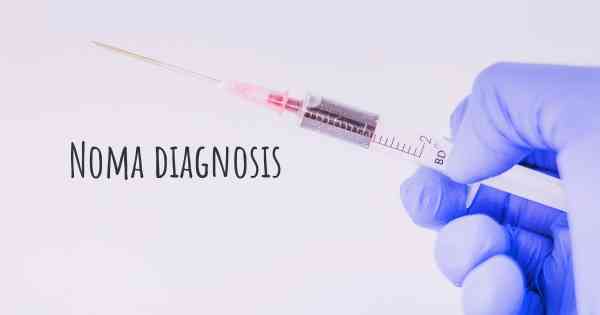How is Noma diagnosed?
See how Noma is diagnosed. Which specialists are essential to meet, what tests are needed and other useful information for the diagnosis of Noma

Noma, also known as cancrum oris, is a severe and rapidly progressive infection that primarily affects the face. It is commonly seen in malnourished children living in poverty-stricken areas with limited access to healthcare. Early diagnosis and prompt treatment are crucial to prevent the devastating consequences of this disease.
The diagnosis of Noma involves a combination of clinical examination, medical history, and laboratory tests. A healthcare professional, such as a doctor or dentist, will typically perform the following steps to diagnose Noma:
1. Medical History: The healthcare provider will inquire about the patient's symptoms, including any pain, swelling, or ulceration in the face or mouth. They will also ask about the patient's overall health, recent illnesses, and any history of malnutrition or poor oral hygiene.
2. Physical Examination: The healthcare provider will carefully examine the patient's face, mouth, and oral cavity. They will look for characteristic signs of Noma, such as facial swelling, ulceration, and tissue destruction. The examination may also involve assessing the patient's general condition, including signs of malnutrition or other systemic infections.
3. Laboratory Tests: To confirm the diagnosis of Noma and rule out other conditions, laboratory tests may be conducted. These tests may include:
- Blood tests: A complete blood count (CBC) can help assess the patient's overall health, detect signs of infection, and evaluate nutritional status.
- Microbiological cultures: Swabs or tissue samples from the affected area may be collected and sent to a laboratory for culture and sensitivity testing. This helps identify the specific bacteria causing the infection and determine the most effective antibiotics for treatment.
- Biopsy: In some cases, a small tissue sample may be taken from the affected area for microscopic examination. This can help confirm the diagnosis and assess the extent of tissue damage.
4. Imaging studies: In advanced cases or when complications are suspected, imaging studies such as X-rays or CT scans may be performed. These can provide detailed images of the affected area, helping to evaluate the extent of tissue destruction and identify any underlying bone involvement.
Once a diagnosis of Noma is confirmed, immediate treatment is essential to prevent further progression of the disease and improve the patient's chances of survival. Treatment typically involves a multidisciplinary approach, including antibiotics, nutritional support, wound care, and surgical interventions if necessary.








